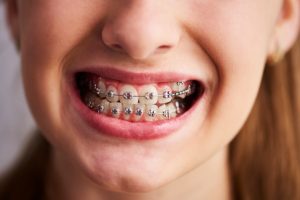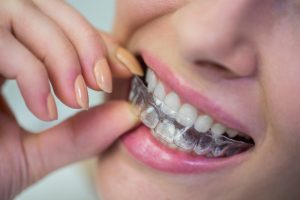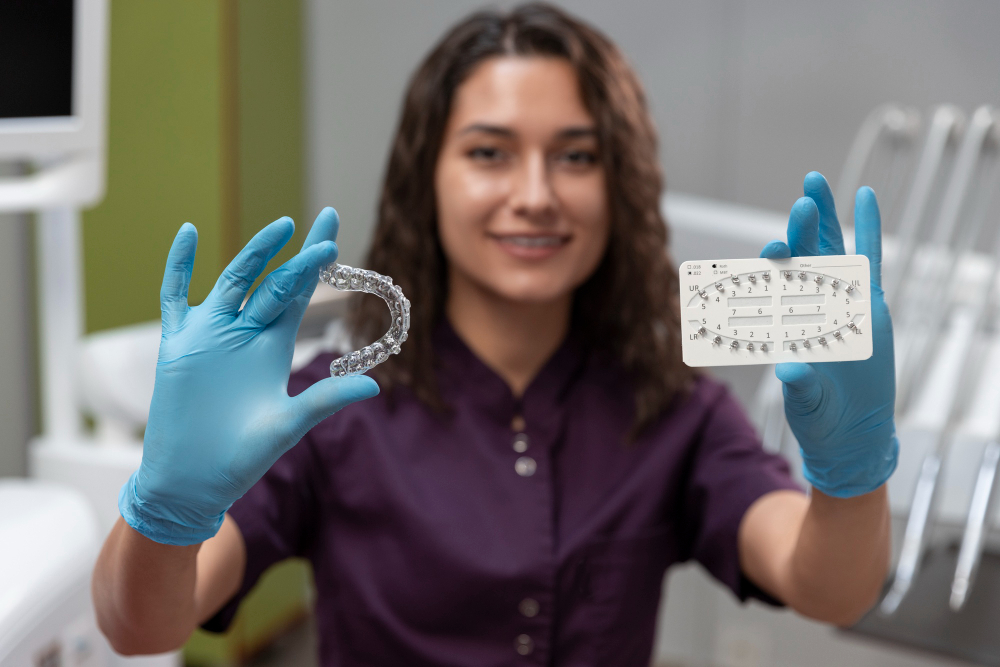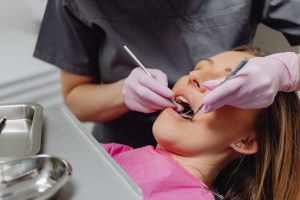For anyone exploring orthodontic solutions, comparing Invisalign to braces is a natural part of the decision-making process. Both are effective orthodontic options. But they differ in how they work, how they look, and what they require from the patient. Braces use a fixed system of wires and brackets, while Invisalign relies on a series of clear, removable aligners. Understanding these differences, along with cost, treatment time, and comfort, can help you decide which option best suits your needs.
Understanding the Basics
Before comparing the two options, it’s important to first understand how each orthodontic system functions.
Traditional Braces
Braces consist of ceramic or metal brackets that are attach to the front of the teeth, with an archwire running through them and held in place by elastic ligatures. Over time, the wires are periodically tighten (usually every 4–6 weeks) to apply controlled force and shift the teeth into alignment. Braces are fix and require professional adjustments in a hopkins dental throughout the treatment. Braces are typically affix for 1.5 to 3 years in total, depending on the extent of misalignment.
Invisalign
Invisalign utilizes custom-made clear aligners crafted from a patented thermoplastic material. These aligners cover the teeth and apply gentle, consistent pressure to move the teeth. Each set is worn for about 1–2 weeks before being replace with the next. Invisalign aligners are removable, nearly invisible, and digitally planned for precision. The complete length of Invisalign treatment depends on the severity of misalignment and patient compliance. Typical timelines are as follows:
- Mild corrections: 3–6 months
- Moderate corrections: 12–18 months
- Complex malocclusions: 18–30 months
If aligners are not worn for 20–22 hours per day, treatment time may be prolong.
Pros and Cons: Invisalign vs Braces
When comparing Invisalign to braces, the ideal treatment option depends on case complexity, budget, and lifestyle. Here’s how the two options differ:
Pros of Braces
- Versatility: Braces are effective for treating a wide range of orthodontic issues, including severe bite problems and complex tooth rotations that may not respond to clear aligners.
- No Patient Compliance Needed: As a fixed appliance, braces work continuously without relying on patient wear time, making them ideal for younger patients or those who may forget to wear removable trays.
- Durability: Made from strong metal or ceramic materials, braces are built to handle the forces require for significant tooth movement and remain effective throughout the treatment.
- Cost-Effective: Braces are generally more affordable than Invisalign, especially for complex cases requiring long-term care.
- Suitable for All Age Groups: Braces are commonly used for children, teens, and adults alike, making them a trust option across all age ranges.
Cons of Braces
- Diet Restrictions: Patients must avoid certain foods, especially hard, sticky, or chewy items, to prevent damage to brackets and wires.
- Difficult Oral Hygiene: Braces can make brushing and flossing more challenging, as food and plaque often accumulate around the brackets. Additional cleaning tools are often needed.
- Less Aesthetic: The visibility of metal or ceramic brackets may be a concern for those who prefer a more discreet treatment option.
- Discomfort: Brackets and wires can irritate the inner cheeks and lips, especially after adjustments, leading to occasional soreness or ulcers.
- Emergency Visits to the Dentist: Braces can sometimes break or become loose, requiring an unscheduled trip to the dental office for repair.

Pros of Invisalign
- Comfortable Fit: Invisalign aligners are made from medical-grade plastic that sits comfortably in the mouth, causing minimal irritation to the gums or cheeks.
- Removable for Daily Activities: The aligners can be easily taken off during meals or while brushing and flossing, making everyday routines more convenient.
- Supports Better Oral Hygiene: Since the aligners are removable, it’s easier to maintain good brushing and flossing habits without any obstructions.
- No Dietary Restrictions: There’s no need to avoid hard, sticky, or chewy foods; simply remove the aligners while eating and enjoy your meals without worry.
- Subtle Appearance: Invisalign is designed to be nearly invisible, making it a good option for those who prefer a more discreet treatment.
- Fewer Unexpected Visits: Without metal brackets or wires, there’s a lower chance of dental emergencies or urgent adjustments.
Cons of Invisalign
- Higher Cost: Invisalign treatment often comes at a higher price point compared to traditional braces, which may be a factor for some patients.
- Requires Consistent Wear: To be effective, the aligners must be worn for 20 to 22 hours a day. Skipping wear time can delay results.
- Not Suitable for Some Cases: Invisalign may not be recommend for severe bite issues or significant tooth movements, where traditional braces are more effective.
- Potential for Longer Treatment: In some mild cases, Invisalign can take longer than expected when compared to conventional braces.
- Care While Wearing Aligners: You need to avoid sugary beverages when aligners are in place. Liquid and sugars can become trapped beneath the trays, which may lead to enamel erosion over time.
Switching from Braces to Invisalign
Switching from braces to Invisalign is possible and often done for improved comfort or aesthetics. However, timing and feasibility depend on the individual case.
Invisalign is typically use after braces for two primary purposes:
- Finishing Aligners (Refinement)
Invisalign can be use post-braces for minor detailing and finishing touches to perfect alignment.
- Retention
Like all orthodontic treatments, retainers are essential to prevent teeth from shifting back. Invisalign-style retainers are often prefer for their comfort and discreet appearance.
Orthodontists may recommend completing significant tooth movements with braces before transitioning to aligners.
Steps to Switch:
- Brackets are remove.
- A physical impression or digital scan is taken
- Custom Invisalign trays are fabricate and deliver to continue treatment
This transition may increase the total treatment cost and time, depending on how far along the patient is in their current treatment.

Conclusion
There is no one-size-fits-all answer. The ideal choice depends on the patient’s orthodontic needs and personal preferences. Invisalign is ideal for those who value aesthetics, comfort, and flexibility and have mild to moderate alignment issues. Braces are better suite for individuals with severe or complex misalignments or those who prefer a fix, low-maintenance solution.
For those considering a transition from braces to Invisalign, or comparing Invisalign to braces for their initial treatment, a consultation with a qualified orthodontist is the best way to make an informed decision.
Looking for Quality Hopkins Dental Support?
Hopkins Family Dentistry specializes in orthodontic and cosmetic dentistry with affordable treatments tailored to individual needs. Whether beginning your smile alignment journey or looking to switch systems, our team provides expert care, flexible options, and patient-focused service.
Call today at (952) 935-2121 to schedule an appointment or visit us at 1919 Main Street, Hopkins, MN 55343 to get your orthodontic consultation.







